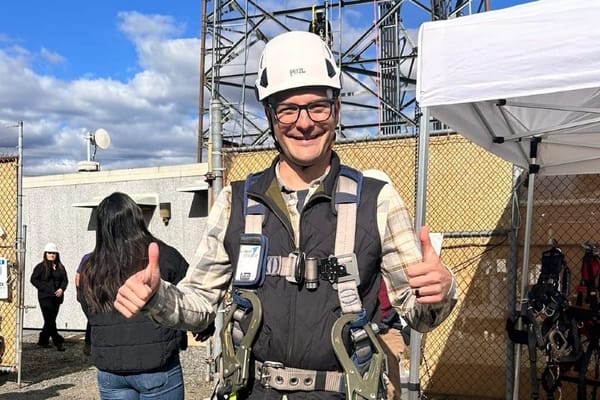CTIA Report Finds Military Systems Can Coexist with 5G in 3 GHz Band
The lower 3 GHz spectrum can be made available for full power wireless based on successful deployment in foreign countries.
Teralyn Whipple

WASHINGTON, August 15, 2023 – Research commissioned by the wireless trade association CTIA shows that U.S. military systems successfully coexist with full power 5G networks in the lower 3 gigahertz band in over 30 countries.
The research shows that at least 150 megahertz of spectrum in the lower 3 GHz band can be made available for exclusive, full-power, licensed commercial use in the United States while protecting key military radar and systems.
“The best evidence that 5G can co-exist with the Pentagon’s operations is what is happening around the globe in allied nations,” said Meredith Baker, CTIA president and CEO. “These real-world examples demonstrate a clear path forward to make available at least 150 megahertz of lower 3 GHz spectrum for full power 5G services while safeguarding the military systems protecting Americans.”
According to the report, more than 50 countries, including several U.S. allies, operate full power 5G networks in the lower 3 GHz band and 20 more countries are expected to join them in the coming years.
“Throughout Asia, nearly 20 countries have deployed in the lower 3 GHz band, with several demonstrating successful coexistence between 5G and U.S. military radar systems,” read the report. Japan reportedly features several U.S. radar systems amid extensive 5G deployments with a well-established host nation agreement that coordinates with the U.S. military to ensure systems do not interfere. Other countries include South Korea, Taiwan and the Philippines.
The CTIA also cites studies that show how 5G operates today alongside the same Department of Defense systems that are used domestically, which highlights that 5G can operate in the 3.3-3.45 GHz band in the U.S. while fully preserving national security, read the press release.
According to the report, the real-world evidence demonstrates how proven coordination methods are “already facilitating simultaneous use of the band by 5G and military radars.” It said that coordination techniques – such as retuning, compression, and frequency coordination – provide assurance that 5G networks can be deployed in the U.S. at full power in lower 3 GHz spectrum without harmful government interference.
“It is well-established that the U.S. needs additional commercial mid-band spectrum to meet increasing consumer demands for wireless data, enhance our national security and secure our leadership of the innovations and industries of the future,” said Baker. “We should ensure U.S. policy promotes 5G deployment in the United States in a manner consistent with how spectrum is being used in the rest of the world.”
“The clear trend of growing commercial use of the lower 3 GHz band internationally, as well as the actual use of 5G near military bases around the globe, should be fully reflected in the Administration and Congress’s evaluation of future commercial access to the lower 3 GHz band,” suggested the support.
It added that “innovation unlocked by high capacity 5G is expected to generate economic growth of up to $1.5 trillion in GDP and 4.5 additional jobs by 2030.”
A global economics consultancy Brattle Group report in April found that the U.S. needs 400 MHz of full power, licensed spectrum in the next five years to meet projected demand. It found that the deficit will grow by more than 3 times to 1,400 MHz by 2032 to keep up with expected consumer demand.
“Commercial access in the lower 3 GHz band would help address this shortfall, while also helping to ensure that American consumers benefit from the economies of scale resulting from using internationally harmonized spectrum bands,” read CTIA’s press report.
“Lower 3 GHz band is a critical component of the spectrum pipeline needed to fuel the growth of 5G, to the benefit of U.S. consumers, enterprises, and government agencies, including the DoD,” read the report.
The report follows a coalition letter last week in which more than a dozen public interest groups urged the Federal Communications Commission to finalize key issues to free up the 6 GHz band for Wi-Fi use. Experts have called for better spectrum regulation and innovation to coordinate better spectrum sharing between commercial use and federal agencies.







